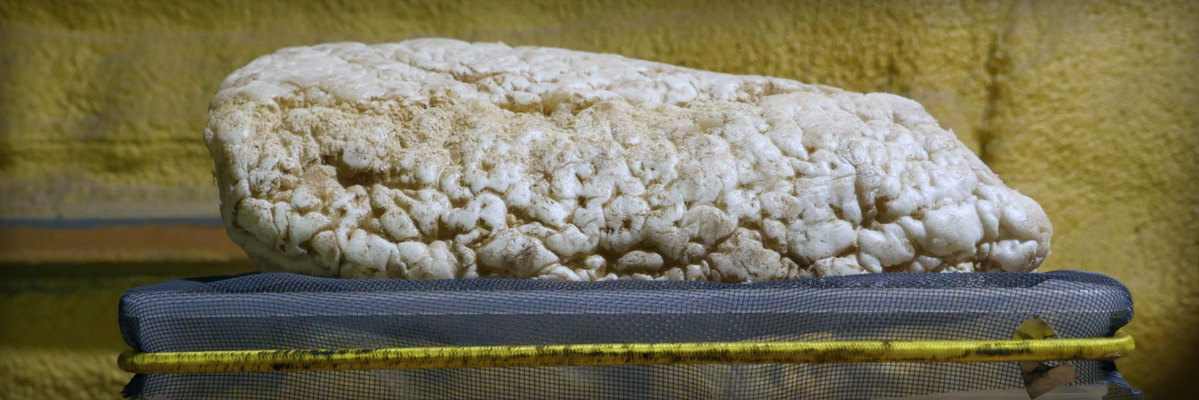Does Spray Foam Insulation Absorb Water?


The worst has happened, and your home has flooded.
There is standing water in the crawl space and all of the rain was more than your roof could handle, leaving leaks throughout the attic.
This happened in the past month here in Mid-Michigan.
Homeowners have enough to worry about when dealing with flooding from structural damage to replacing things in the home, including their insulation.
Fiberglass and cellulose insulation will retain that moisture and then allow for the growth of mold and mildew. That retained moisture and mold can cause problems as a homeowner tries to dry everything out to assess the damage.
Homes with open cell spray foam don’t have to replace the foam when it gets wet, or even after it has been submerged. This might come as a surprise because there is a common misconception that all open cell spray foams absorb water like a sponge and retain it, but that’s not the case.
It’s our mission here at RetroFoam of Michigan to educate homeowners on all things home insulation. As a part of that mission, I am going to explain why the open cell we use doesn’t wick moisture with an interesting comparison – open cell spray foam is similar to concrete when it gets wet.
Now that I have your interest piqued, let’s jump right in.
Does Spray Foam Insulation Trap Moisture?
Does spray foam absorb water? Yes, there are open cell spray foams on the market that will absorb water, but that doesn’t mean they all do.
The spray foam used here at RetroFoam of Michigan does get wet and water even moves through it, but it doesn’t trap moisture indefinitely. This means it will dry out.
We’ll talk more about the material drying out in a moment, right now I want to focus on the moisture in the spray foam and what happens to it.
When it rains outside you can see the concrete is wet. The water doesn’t just sit on the surface of the concrete, it actually moves through it because it is a porous material. This means there are tiny pockets inside the concrete, so when water comes in contact with it those little tiny pockets get filled up.
You know that moisture doesn’t stay in your concrete forever, it eventually evaporates thanks to the sun and air moving over it. The concrete dries out without any signs the moisture was there.
So, how does this apply to open cell spray foam?
Open cell spray foam is also a porous material. This composition helps the water pass through it and any moisture left over will evaporate. So, how long will it take for the spray foam to dry out?
How Long Does Spray Foam Take to Dry?
Does spray foam hold moisture? In a way, yes, because it has to have time to dry out.
This isn’t a one size fits all answer.
So, how long does spray foam take to dry? A small leak might only take a day or two. A larger leak could take nearly a week. Completely submerged foam could take longer. It all comes down to the amount of water in the foam.
You also need to keep in mind that the kind of airflow or ventilation around the foam will also determine how long it takes to dry out.
We took some open cell spray foam from a home in Tawas that was completely submerged following the catastrophic flooding.
We set up one piece with no fan, another piece that had a small fan running on it, and another that was behind the fan pulling moisture out to see how these different methods can affect drying time. We found that without any kind of fan would take the longest, a fan blowing on the foam came in second, while pulling moisture from the foam with the fan was the fastest in this case.
While these times aren’t accurate to conditions in the home, it was interesting to see how airflow affected the experiment.
This is a worst-case scenario, so we wanted to show that even though the foam was soaked through in the beginning, by the time it was dry it still maintained its structural integrity.
What we came away with from this experiment is that different methods will have different drying times and that other variables, like if the wood the foam has been sprayed on is also soaked, can lead to it taking longer for the foam to dry out.
As you can see, no mold or mildew has formed inside the foam and it looks just like it did the day it was sprayed. The foam will maintain its integrity and still provide the air seal you wanted when it was installed.
A homeowner doesn’t need to replace their foam in the case of a leak or flood. Given time, the moisture in the material will evaporate. There are times when the foam does have to be removed and this is when there is structural damage brought on by the flood.
Dealing with Moisture Issues in Your Home
There’s nothing you can do to avoid floods and excessive rainfall.
With that being said, if you know your roof leaks or your crawl space is prone to moisture, these are things that should be addressed before you add any insulation to those areas. Sure, foam can dry out, but that doesn’t account for the structural damage a leak can cause if it goes unchecked.
Foam insulation has a lot to offer, but it can’t fix those structural leaks.
We always recommend having any moisture issues or leaks addressed before foam insulation is installed.
Related Articles
6 Things to Do After a Roof Leak
Can You Use Spray Foam to Stop Basement and Foundation Leaks?
Crawl Space Encapsulation vs Insulation: What’s the Difference?
About Eric Garcia
Eric brings his knowledge and training in building science, training in spray and injection foams from the manufacturers, more than 8 years installing foam insulation, as well as selling and managing in the foam insulation industry. He is also BPI and Dale Carnegie certified and has taken several building science courses including air sealing and building envelope. Eric’s responsibilities include overseeing and giving support to all of the branches of the RetroFoam of Michigan company, office, estimates, and installs. He is also the Professor of Foam on our educational YouTube series Foam University. Even when Eric is off he is usually still “working” or thinking about work, but when he can get away he enjoys camping, hiking, hunting, and woodwork.


